#chapattis
Explore tagged Tumblr posts
Photo
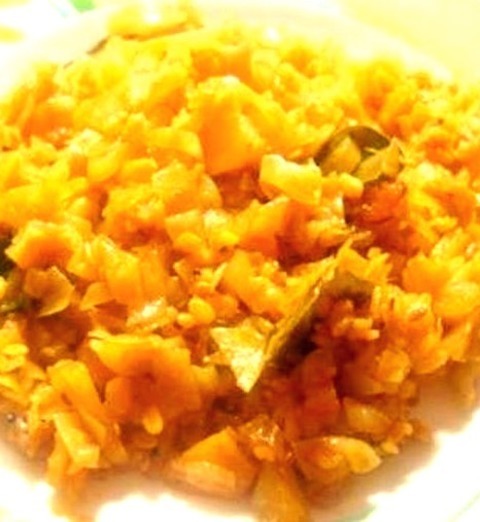
Kobi Batata Bhaji Indian Fried Cabbage and Potato Recipe A typical dish from the Indian state of Maharashtra is kobi batata bhaji. With rice or chapattis, fried cabbage and potatoes are prepared with spices and oil.
0 notes
Photo
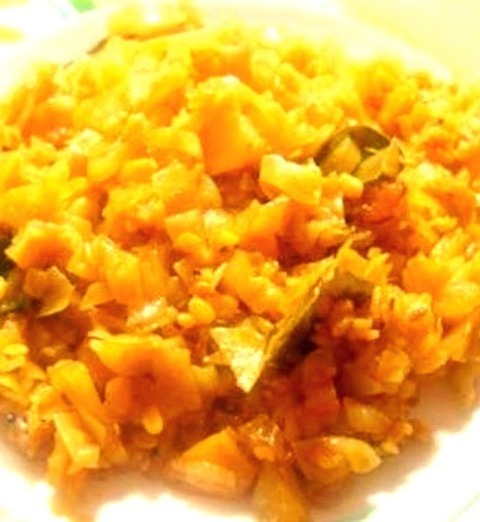
Kobi Batata Bhaji Indian Fried Cabbage and Potato Kobi batata bhaji is a traditional dish from the Indian state Maharashtra. Cabbage and potato are fried in oil and spices and served with rice or chapattis.
0 notes
Photo
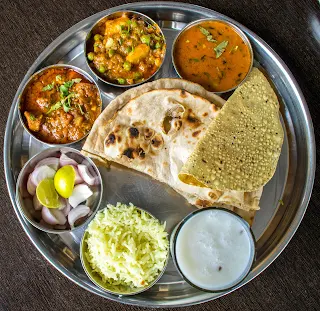
(via Recette Ayurvédique Chapatis (pain sans levain))
#chapati#chapatti#apero#plat#recette#recetteayurvedique#ayurvedique#cuisine#alimentation#nutrition#nourriture#manger#inde
2 notes
·
View notes
Text
Today’s lunch ~
Chapati with tahini and maple syrup
One of my favorites! 😋

AUGMENTING:
Organic oat and organic barley flour, and Canadian maple syrup 🫓 🍁
EXTRACTIVE:
Organic tahini

I used some of the leftover milk solids (from making ghee) to “butter” the chapati, but quickly learned that it burned, so switched to ghee for my next chapati 😬😅



#Food #Nourishing #Healthy #Healing #Sattva #Sattvic #Ayurveda #Vegetarian #Agni #Digestion #Life
0 notes
Text

A bountiful medley of beans and vegetables. This easy curry can be made in minutes. Increase or decrease the spices to suit your taste. Serve over rice with Indian naan bread or chapatti flatbread.
0 notes
Text
Flour Machine: Chapati Making Machines – Health and Safety Considerations
When it comes to setting up a food business focused on Indian cuisine, particularly one that involves making chapatis, investing in the right equipment is crucial. Chapati making machines, also known as flour machines or roti makers, are indispensable tools for efficiently producing high-quality chapatis. However, as with any food processing equipment, it's essential to prioritize health and safety considerations to ensure a safe working environment and maintain product quality.

#Chapati making machine manufacturers#chapatti making machine suppliers#Chapati making machines#chapati making#chapati machine manufacturers#chapati machine suppliers#chapati
0 notes
Text
Chapati making machine
A chapati making machine is a piece of equipment designed to automate the process of making chapatis, which are a type of flatbread commonly consumed in South Asia. These machines are particularly useful in commercial settings where large quantities of chapatis need to be produced efficiently. Here are some features and aspects commonly associated with chapati making machines:
Automation: Chapati making machines are automated and can perform tasks such as dough kneading, flattening, and cooking, reducing the need for manual labor.
Dough Kneading: The machine typically includes a dough kneading mechanism to prepare the chapati dough. It ensures consistent and well-mixed dough.
Flattening Mechanism: After kneading the dough, the machine flattens it into thin, round shapes similar to chapatis. This process is often automated to maintain uniform thickness.
Cooking: Some advanced machines can also cook the chapatis. They may have hot plates or conveyors for baking the flattened dough, ensuring that the chapatis are fully cooked.
Adjustable Settings: Machines often come with adjustable settings for controlling factors like dough thickness, cooking temperature, and cooking time to meet specific preferences.
Capacity: Chapati making machines come in different capacities, ranging from small-scale models suitable for restaurants to large-scale industrial machines for mass production.
Material and Construction: These machines are typically constructed using stainless steel, which is easy to clean and maintain, ensuring hygiene in a food preparation environment.
Power Source: Chapati making machines may be electrically powered or use other energy sources, depending on the model and design.
Ease of Cleaning: Hygiene is crucial in food preparation, so these machines are designed to be easy to clean. Detachable parts and smooth surfaces facilitate cleaning and maintenance.
Customization: Some machines allow for customization of chapati size and thickness based on user preferences or specific requirements.
When considering purchasing a chapati making machine, it's essential to assess the specific needs of the business or household, the desired capacity, available space, and the features offered by different models. Additionally, maintenance and cleaning requirements should be taken into account to ensure the longevity and efficiency of the machine.
Automatic chapati making machine
Automatic chapati making machines are devices designed to streamline the process of chapati production in commercial and industrial settings. These machines are highly efficient, capable of producing a large number of chapatis in a short amount of time. Here are some common features associated with automatic chapati making machines:
Dough Mixing: These machines often come with an automated dough mixing system. They accurately measure and mix the ingredients to produce consistent and well-mixed dough.
Dough Ball Formation: After mixing, the machine shapes the dough into uniform balls, ensuring consistency in the size of the chapatis.
Dough Flattening: The dough balls are then passed through a flattening mechanism, which rolls them into thin, round chapatis. This process is automated to maintain uniform thickness.
Cooking System: Automatic chapati making machines may have an integrated cooking system, which involves baking or cooking the flattened dough. This can be achieved through hot plates, conveyors, or other cooking mechanisms.
Temperature Control: These machines often come with temperature control settings to regulate the cooking temperature, ensuring that the chapatis are cooked evenly and thoroughly.
Adjustable Size and Thickness: Users can often adjust the settings to control the size and thickness of the chapatis according to their preferences or specific requirements.
High Production Capacity: Automatic chapati making machines are designed for high production capacities, making them suitable for large-scale commercial and industrial use.
Stainless Steel Construction: To ensure hygiene and easy cleaning, these machines are commonly constructed with stainless steel, which is resistant to corrosion and can withstand rigorous use.
User-friendly Interface: The machines typically feature a user-friendly control panel or interface, making it easy for operators to set parameters and monitor the production process.
Safety Features: Safety features such as emergency stop buttons and protective guards are often incorporated to ensure the well-being of operators.
Low Maintenance: Automatic chapati making machines are designed to be low maintenance, with easy-to-clean components and minimal wear and tear.
When considering an automatic chapati making machine, it's crucial to assess the specific production requirements, available space, and budget. Different models may vary in terms of capacity, speed, and additional features, so choosing a machine that aligns with the needs of the business is essential.
Fully automatic chapati making machine
Fully automatic chapati making machines are advanced devices designed to handle the entire process of chapati production, from dough preparation to cooking, with minimal human intervention. These machines are commonly used in commercial and industrial settings where large quantities of chapatis need to be produced efficiently. Here are some key features associated with fully automatic chapati making machines:
Dough Mixing: These machines typically feature an automated dough mixing system that accurately measures and combines ingredients to create a consistent and well-mixed dough.
Dough Ball Formation: After mixing, the machine shapes the dough into uniform balls, ensuring standardized sizes for the chapatis.
Flattening Mechanism: The dough balls are automatically fed into a flattening mechanism that rolls them into thin, round chapatis. This process ensures uniform thickness and size.
Automatic Cooking: Fully automatic chapati making machines often include an integrated cooking system. The flattened dough is automatically transferred to a cooking unit, where chapatis are baked or cooked.
Temperature Control: These machines come with temperature control settings to regulate the cooking temperature, ensuring that the chapatis are cooked evenly.
Adjustable Size and Thickness: Users can typically adjust settings to control the size and thickness of the chapatis according to their preferences or specific requirements.
High Production Capacity: Fully automatic chapati making machines are designed for high production capacities, making them suitable for large-scale operations.
Stainless Steel Construction: To ensure hygiene and easy cleaning, these machines are often constructed with stainless steel, which is resistant to corrosion and easy to maintain.
Touchscreen Control Panel: The user interface is often equipped with a touchscreen control panel, making it easy for operators to set parameters, monitor the production process, and make adjustments.
Safety Features: These machines are equipped with safety features such as emergency stop buttons, protective guards, and sensors to ensure the safety of operators.
Low Maintenance: Fully automatic chapati making machines are designed to be low maintenance, with components that are easy to clean and durable for long-term use.
When considering a fully automatic chapati making machine, businesses should carefully evaluate their production requirements, available space, and budget constraints. Different models may offer varying capacities, speeds, and additional features, so choosing a machine that aligns with the specific needs of the business is crucial.
#Automatic chapatti machine#Automatic chapatti making machine#Fully automatic roti maker#Roti making machine
0 notes
Text
Chapatti making machine
There wasn’t a widely available or commercially successful fully automated roti-making machine on the market. However, technology and product availability can change rapidly, so it’s a good idea to check the latest developments.
Making roti involves a combination of tasks such as mixing the dough, flattening it into circles, and cooking on a hot surface. Some automated machines may be able to handle portions of this process, but the complete automation of roti making, including the quality aspects that are important in many cultural cuisines, can be challenging.
If you’re interested in a roti-making machine, consider checking online retailers, appliance stores, or technology expos for the latest products. Additionally, keep an eye on developments in smart kitchen appliances, as advancements in technology may lead to more automated solutions for traditional cooking tasks.
It’s important to read reviews, consider user feedback, and evaluate the features of any product before making a purchase. Additionally, the availability of such products can vary by region.
Commercial roti making machine:
There were commercial roti-making machines available in the market. These machines are designed to automate the process of making roti’s, and they are commonly used in commercial kitchens, restaurants, and other food establishments where large quantities of roti’s are required.
Commercial roti-making machines typically consist of a series of conveyor belts, rollers, and heating elements to automate the entire process, from dough preparation to cooking. These machines can produce roti’s in bulk, saving time and labor in commercial settings.
To find a commercial roti-making machine, you may want to explore specialized kitchen equipment suppliers, restaurant supply stores, or online platforms that cater to commercial kitchen needs. It’s essential to consider factors such as the production capacity, size, and maintenance requirements when choosing a commercial roti-making machine.
Keep in mind that product availability and advancements in technology can change, so it’s a good idea to check the latest offerings from manufacturers and suppliers in your region. Additionally, customer reviews and testimonials can provide insights into the performance and reliability of specific machines.
Automatic chapatti making machine:
Automatic chapatti-making machines are designed to simplify and expedite the process of making chapatti’s (also known as roti’s or flatbreads). These machines are commonly used in commercial kitchens, canteens, and other food establishments where there is a high demand for chapatti. Here are some key features and aspects to consider when looking for an automatic chapatti-making machine:
Capacity: These machines come in various capacities, ranging from a few hundred to several thousand chapatti per hour. Choose a machine that meets the production needs of your establishment.
Automation Levels: Different machines offer varying degrees of automation. Some machines can handle the entire process, from dough preparation to cooking, while others may require manual input at certain stages.
Dough Feeding System: Automatic chapatti-making machines usually have a dough feeding system that automates the process of feeding the dough into the machine. Some machines may have hoppers or conveyors for this purpose.
Pressing and Cooking Mechanism: The machines typically have a mechanism for pressing the dough into flatbreads and a cooking element for baking them. The cooking process may involve heated plates, ovens, or other methods.
Adjustability: Look for machines that allow you to adjust the thickness and size of the chapatti’s to meet specific preferences.
Material and Build Quality: Consider the material and build quality of the machine to ensure durability and ease of maintenance. Stainless steel is a common material for components that come into contact with food.
Energy Efficiency: Check the energy efficiency of the machine, especially if sustainability and operating costs are important considerations for your business.
Ease of Cleaning and Maintenance: Opt for a machine that is easy to clean and maintain. Look for features such as removable components and user-friendly controls.
Safety Features: Ensure that the machine has adequate safety features to protect operators during use.
When searching for automatic chapatti-making machines, you can explore online platforms, commercial kitchen equipment suppliers, or industry trade shows to find suitable options. It’s crucial to read reviews, compare specifications, and possibly seek recommendations from others in the food service industry to make an informed decision based on your specific needs and preferences. Keep in mind that product offerings and technology may have evolved since my last update in January 2022, so checking the latest developments is advisable.
Automatic chapatti maker:
Automatic chapatti makers were available in the market. These machines are designed to automate the process of making chapatti’s (also known as roti’s or flatbreads). Automatic chapatti makers are particularly useful in commercial settings where there’s a high demand for chapatti’s, such as restaurants, hotels, and large-scale catering services.
Here are some general features you might find in an automatic chapatti maker:
Dough Feeding System: Automatic chapatti makers typically have a system for feeding the dough into the machine. This can involve hoppers or conveyor belts that streamline the process.
Pressing Mechanism: The machine usually includes a mechanism for pressing the dough into flatbreads. This can involve rollers or other pressing elements.
Cooking Element: There is a cooking element that bakes or cooks the chapati. This could be through heated plates, ovens, or other methods.
Adjustable Settings: Many machines allow you to adjust settings such as the thickness and size of the chapatti’s to meet your preferences.
Capacity: These machines come in different capacities, with the ability to produce a certain number of chapatti per hour. Choose a machine that meets your production requirements.
Material and Build Quality: Consider the material and build quality of the machine, especially components that come into contact with food. Stainless steel is commonly used for hygiene and durability.
Ease of Cleaning: Look for a machine that is easy to clean, with features like removable components.
Safety Features: Check for safety features to ensure the machine can be operated safely.
To find an automatic chapatti maker, you can explore commercial kitchen equipment suppliers, online retailers, or industry-specific trade shows. Read product reviews, compare specifications, and possibly consult with other businesses in the food industry for recommendations.
Keep in mind that the availability of products and technological advancements may have changed since my last update, so it’s a good idea to check for the latest models and reviews from reliable sources.
#automatic chapatti machine#fully automatic roti maker#domestic automatic roti making machine#fully automatic roti making machine
0 notes
Photo

Recipe for Quick Vegetable Curry a generous assortment of vegetables and beans. Make this quick curry in a matter of minutes. Depending on your preference, you can add more or less spice. Serve with Indian naan bread or chapatti over rice flatbread.
1 note
·
View note
Photo
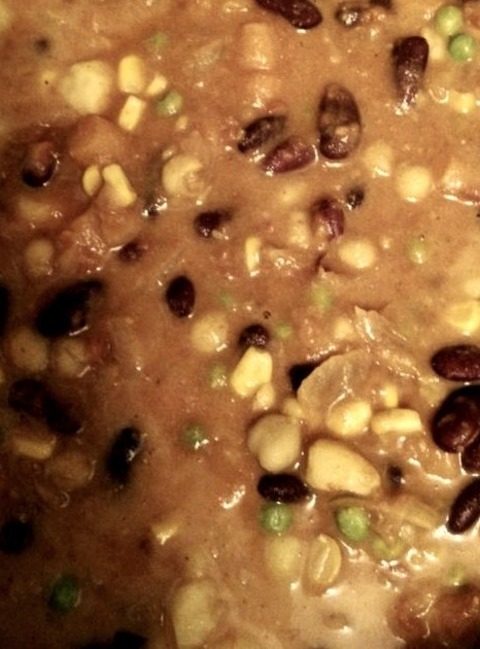
Indian - Quick Vegetable Curry a generous assortment of vegetables and beans. Make this quick curry in a matter of minutes. Depending on your preference, you can add more or less spice. Serve with Indian naan bread or chapatti over rice flatbread.
0 notes
Photo
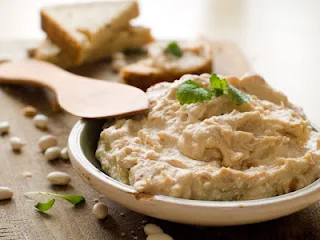
(via Recette Ayurvédique Houmous tridoshique (pour accompagner les Chapatis))
1 note
·
View note
Text
What’s the difference between a roti 🫓 and a chapati 🫓 ?


I’m not sure.
I’ve heard a few things.
I’ve read a few things.
I’ve spelled it incorrectly 🧐, I’m sure … chappati?
chapatti?
chapati? 🫓 🤷🏻
Someone recently told me that a roti is smaller and thicker, while a chapati is bigger and thinner.
I read that a chapati is oiled (ghee) on both sides and cooked, whereas a roti has butter applied only on one side, and only after it’s been fully cooked.
I don’t know.
… about the thickness, or the size, but the buttering (ghee) part rings true for me 🛎️
Here are pics of a couple of gluten-free chapatis that I’ve made, and of gluten-full rotis that my mom made (June 28th roti 🫓).

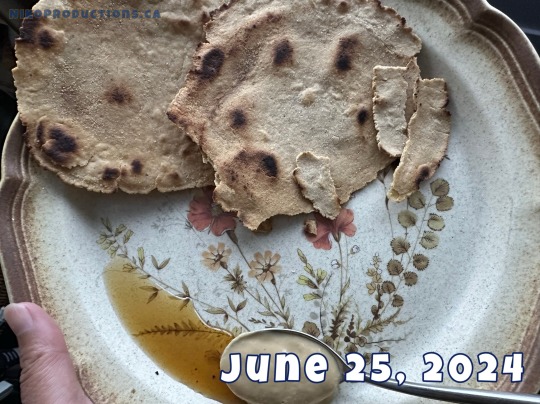




Shed some light in the COMMENTs if you know 🫓
#Food
0 notes


